This article provides an in-depth exploration of electrical slip rings assembly, demystifying its components, functionality, and broad applications. Through a structured breakdown, readers will gain insight into the basics, types, and key considerations crucial for selecting, maintaining, and troubleshooting slip ring assemblies. It further delves into the significant role slip rings play across various sectors, underscoring their importance in the evolution of modern technology. Additionally, the article highlights the latest innovations and future trends, navigating the landscape of electrical connectivity solutions.
An Overview of Electrical Slip Rings Assembly
Electrical slip ring assemblies are a marvel of engineering that solve a ubiquitous challenge in the realm of electromechanical systems. These vital components enable the transfer of electrical signals, data, and power through a rotating interface. At the heart of an electrical slip rings assembly lies a set of conductive rings and brushes; as one part turns with the rotating device, the rings maintain a constant connection with the static brushes, thereby ensuring a continuous electrical circuit.
The significance of electrical slip ring assemblies spans across myriads of industries and serves functions that are both intricate and essential. These range from the rotating surveillance cameras that secure our buildings to the colossal wind turbines generating green energy from the dance of their massive blades. Not only confined to such large-scale implementations, but they are also the unseen heroes in medical equipment like CT scanners, where their reliable performance is a matter of life-saving accuracy. In the realm of robotics and space satellites, the precision enabled by slip ring assemblies is nothing short of critical for operational success.
By bringing to life real-world examples like the advancement of renewable energy through wind turbines, this introduction sets the stage for an article that is both informative and relatable. The applications are diverse and the impact significant; just imagine the Sydney Opera House without its gracefully pivoting stage equipment or the International Space Station without its precise mechanisms, all of which rely on the humble but indispensable electrical slip rings assembly.
The following chapters will delve deeper into the types, applications, and maintenance considerations of slip ring assemblies, demystifying their technical aspects and showcasing their indispensable role in our technological society. Through real-world case studies, we will explore how slip rings are not merely about electrical continuity but are the backbone of motion and energy transfer in countless applications. We will also address common queries and debunk prevailing misconceptions, offering actionable advice that readers can apply in their respective fields. Join us on this electrifying journey as we unravel the enigma of the electrical slip rings assembly, a silent conductor of dynamic modern innovation.
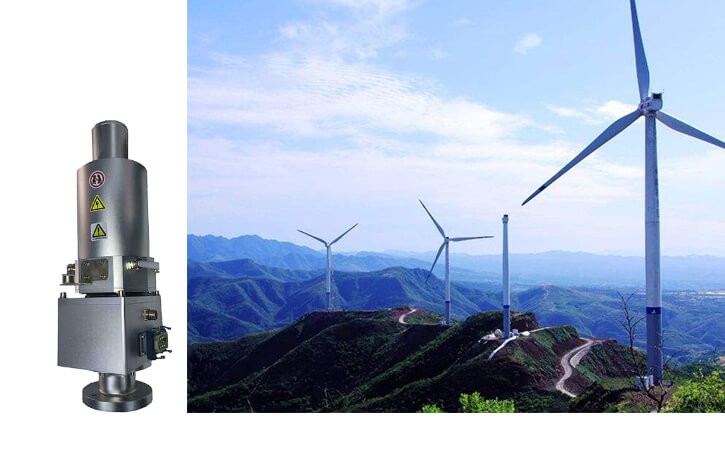
The Basics of Electrical Slip Rings Assembly
Electrical slip ring assemblies, intriguing in their functionality and design, stand as a testament to human ingenuity in overcoming the challenges of electrical continuity in rotating systems. This chapter demystifies the fundamental components and mechanics underlying these devices, setting a foundation for appreciating their widespread applications and the technological advancements they enable.
Understanding the Core Components
At the heart of every electrical slip rings assembly are two primary components: the rings and the brushes. The rings, typically made of conductive materials like copper or gold alloys, are mounted on a rotating part of the machinery. Each ring is dedicated to carrying a specific electrical signal or power current. In close proximity, yet without hindering the rotation, are the brushes. Made from materials such as graphite or precious metal alloys, these brushes lightly press against the rings, maintaining an electrical connection as the device spins.
The assembly might also include other elements such as insulating materials, which prevent electrical interference between the conductive parts, and bearings to ensure smooth rotation. The precise engineering of these components in concert allows slip ring assemblies to operate seamlessly, providing a vital solution to a complex problem.
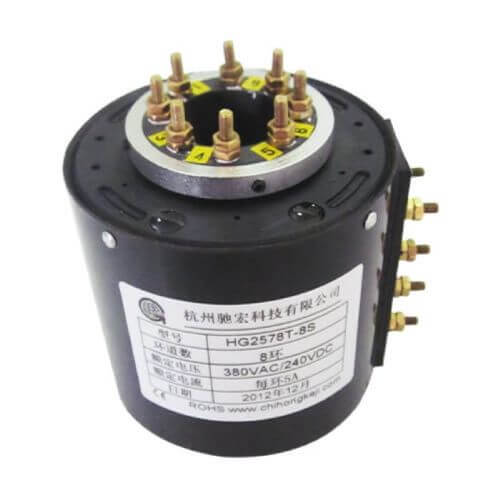
Mechanics of Operation
The principle behind how electrical slip ring assemblies function lies in the perpetual physical contact between the rings and the brushes. As the device rotates — whether it’s the swiveling base of a crane or the rotor of a wind turbine — the electrical current or data signal is transferred from a stationary to a rotating platform. This constant connection ensures that, despite the moving parts, the flow of electricity or data remains uninterrupted.
Consider the real-world application of slip ring assemblies in wind turbines. The turbine’s blades must rotate to capture wind energy, yet this action could inherently disrupt the transmission of electrical power generated to the ground. Here, slip ring assemblies step in as critical enablers, allowing the rotor to spin freely while maintaining a constant electrical connection to the stationary part of the turbine.
Addressing Common Questions and Misconceptions
A common misconception about slip ring assemblies is that the friction between the brushes and rings would lead to rapid wear and tear, potentially rendering them unreliable. However, advancements in materials science have significantly improved the durability and lifespan of these components. Moreover, slip ring assemblies are designed for easy maintenance, ensuring they can support the long-term operation of the equipment they are part of.
Actionable Advice
For those in industries relying on rotational machinery, understanding the basics of slip ring assemblies is crucial. When choosing a slip ring, consider factors like the environment in which it will operate (e.g., exposed to the elements versus housed indoors) and the type of signal or power it needs to transmit. Consulting with manufacturers or engineers specialized in slip ring technology can provide insights tailored to specific applications, ensuring the selection of the most appropriate assembly.
This chapter has laid the groundwork for appreciating how electrical slip ring assemblies function as a linchpin in modern electromechanical systems. With their basic mechanics unveiled, we can delve deeper into the varieties and innovations that keep these assemblies at the forefront of technological advancement.
Types of Electrical Slip Rings Assembly
Venturing deeper into the world of electrical slip ring assemblies reveals a landscape rich with diversity, each designed to meet specific requirements and challenges. This chapter explores the main types of slip ring assemblies — capsule, through-bore, and pancake — and shines a light on specialized versions developed for unique industrial applications. These slip rings not only differ in their structure but also in the unique advantages they offer, tailored for seamless integration into various electromechanical systems.
Capsule Slip Ring Assemblies
Capsule slip rings are compact, cost-effective solutions ideal for applications where space is at a premium. Characterized by their cylindrical shape, these slip rings house miniature rings and brushes in a tight configuration, making them perfect for devices like CCTV cameras or robotic arms where small size and reliability are crucial.
One real-world example of capsule slip ring application is in modern security systems. CCTV cameras that require 360-degree rotation without tangling wires use capsule slip rings to maintain a constant electrical connection for both power and data transmission, ensuring uninterrupted surveillance.
Through-Bore Slip Ring Assemblies
Through-bore slip rings feature a hollow shaft design, allowing them to be mounted directly onto a rotating shaft. This unique configuration offers the advantage of accommodating various mechanical assemblies through the bore, making them suitable for applications requiring higher circuit counts or larger physical dimensions, such as wind turbines and medical equipment.
Consider the use of through-bore slip rings in CT scanners. The ability to pass coolant lines or other mechanical components through the center of the slip ring facilitates the scanner’s complex rotation mechanisms, ensuring precise imaging critical for accurate diagnoses.
Pancake Slip Ring Assemblies
Pancake slip rings, or flat slip rings, are designed for applications where axial length is limited but diameter is less constrained. These assemblies are characterized by their flat, disc-like shape, with concentric rings placed close together. This design is particularly beneficial for equipment where a short axial length is critical, such as in certain types of rotating stages and tables.
A practical example of pancake slip ring usage is within theatrical stage equipment. The slim profile of pancake slip rings is ideal for integrating into rotating stage platforms, allowing for the seamless transmission of lighting and sound signals without compromising the design and functionality of the stage setup.
Specialized Slip Rings for Industrial Needs
Beyond these common types, there are specialized slip ring tailored for specific industries and applications. For instance, high-speed slip rings are designed to withstand the rigors of applications involving exceptionally high rotational speeds, such as in aerospace testing equipment. Similarly, fiber optic slip rings provide an effective solution for transmitting vast amounts of data without electromagnetic interference, crucial for telecommunications and advanced defense systems.
Addressing Common Questions and Misconceptions
A frequent concern relates to the adaptability of slip ring assemblies to different environmental conditions, especially in harsh or outdoor settings. It’s important to note that many slip rings are designed with rugged casings and materials specifically chosen for their resistance to elements like moisture, dust, and extreme temperatures, ensuring reliability across a wide array of environments.
Actionable Advice
When selecting a slip ring assembly, it’s imperative to consider the specific demands of your application, including space constraints, required data or power transmission capacity, and environmental conditions. Engaging with manufacturers who offer custom solutions can also be invaluable in addressing unique challenges, ensuring that the chosen slip ring assembly perfectly aligns with your system’s needs.
Through this exploration of the different types of electrical slip ring assemblies and their specialized counterparts, it becomes apparent that the diversity of these devices is key to their widespread applicability across industries. As we venture into discussions on application-specific slip rings in the following chapters, the ingenuity and adaptability of slip ring technology continue to underscore its indispensable role in the advancement of modern electromechanical systems.
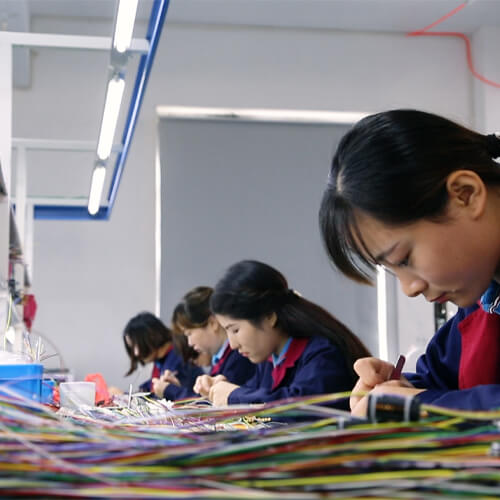
Key Applications of Electrical Slip Rings Assembly
The ubiquity of electrical slip ring assemblies across various sectors underscores their critical role in modern technology. This chapter delves into the pivotal applications of slip ring assemblies in industries such as wind energy, military, medical, and robotics. Each of these fields benefits significantly from the unique ability of slip rings to facilitate uninterrupted rotational motion while seamlessly transmitting power and data, a feature that has become indispensable in advancing innovation and efficiency.
Wind Turbines: Harnessing Renewable Energy
The renewable energy sector, particularly wind turbines, serves as a testament to the value of slip-ring assemblies. In these giants, slip rings play a crucial role by enabling the rotor blades to spin freely while maintaining a continuous electrical connection from the generator to the stationary part of the turbine. This ensures that the electricity generated can be transmitted to the grid without interruption, a fundamental requirement for reliable energy production. The through-bore slip rings are often employed here, providing a solution that accommodates the complex needs of these turbines, including data communication and control signal transmissions essential for optimizing performance and monitoring conditions.
Military Equipment: Ensuring Robust Communication and Control
In the realm of military equipment, the reliability and efficiency of slip ring assemblies are non-negotiable. From radar antennas to turret systems, slip rings ensure that vehicles and equipment maintain flawless operation through rigorous conditions. They enable the transmission of crucial data and power in tanks and armored vehicles, ensuring that communication systems, weaponry, and surveillance equipment operate seamlessly during rotation. The durability and precision of specialized slip rings in these applications are paramount, underpinning the safety and effectiveness of military operations.
Medical Machinery: Revolutionizing Patient Care
The medical sector benefits immensely from the precision and reliability slip ring assemblies offer. In diagnostic machines such as CT scanners and MRI machines, pancake and through-bore slip rings facilitate the rotation of the gantry while enabling the high-speed transmission of data and images. This capability is crucial for producing detailed and accurate diagnostics, directly impacting patient care. Moreover, slip rings in these applications are designed to meet stringent hygiene and safety standards, ensuring that they can operate in sensitive medical environments.
Robotics: Enhancing Flexibility and Functionality
Robotics is another area where slip rings significantly contribute, enhancing the flexibility and functionality of robots in manufacturing, exploration, and even entertainment. Capsule slip ring assemblies, owing to their compact design, are particularly suited for robotic arms and drones, providing continuous power and data transmission across rotating joints. This integration allows for complex movements and operations, from precision assembly in manufacturing processes to capturing panoramic footage in filmmaking.
Addressing Common Questions and Misconceptions
A prevalent misconception is that the maintenance of slip ring assemblies is overly complex and time-consuming. However, modern slip rings are designed with ease of maintenance in mind, with many models offering modular components for quick repairs or replacements. Regular inspection and maintenance routines are advised, ensuring that slip ring assemblies continue to operate effectively over their intended lifespan.
Actionable Advice
Identifying the correct type and specification of slip ring assembly for your application is critical. It involves not only understanding the basics of how slip rings work but also the specific demands of your industry. Consultation with experts and manufacturers during the design phase can prevent potential issues and ensure that your system benefits from the optimal slip ring solution, tailored to your needs.
Through these diverse applications, the essential role of slip ring assemblies in modern electromechanical systems becomes evident. From generating renewable energy to saving lives in medical advancements, and from ensuring national security to pushing the boundaries of robotics, slip rings stand as pivotal components that bridge the gap between static and rotational motion, driving progress across industries.
Considerations for Electrical Slip Rings Assembly Selection
Selecting the right electrical slip rings assembly is paramount to ensuring the success and reliability of your mechanical system. With a plethora of options available, making an informed choice requires a comprehensive understanding of various factors, including current and voltage requirements, operating environments, and rotational speed. This chapter aims to shed light on these critical considerations while addressing common questions and concerns, guiding you through the decision-making process with clarity and confidence.
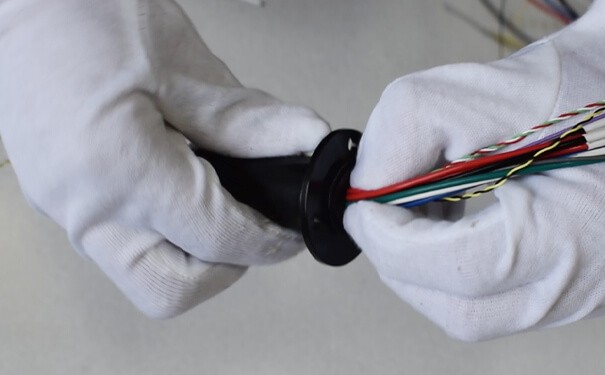
Understanding Current and Voltage Requirements
One of the primary considerations when selecting a slip ring assembly is the current and voltage requirements of your application. Slip rings are designed to handle specific electrical loads, and choosing a unit that matches your system’s demands is crucial for preventing overloads and ensuring efficient power transmission. Consider a wind turbine application, where the electrical output can be substantial. A slip ring assembly capable of handling high voltage and current is essential to facilitate the transfer of electricity generated by the turbine to the power grid without significant losses or the risk of electrical failure.
Navigating the Operating Environment
The environment in which the slip ring will operate plays a significant role in the selection process. Factors such as temperature, humidity, exposure to corrosive agents, and the presence of dust or debris can impact the performance and longevity of a slip ring assembly. For instance, slip rings used in marine applications must be resistant to saltwater corrosion and designed to perform reliably in a humid, salty air environment. Similarly, slip rings deployed in industrial settings with high levels of airborne particulates need robust sealing to prevent contaminants from affecting their operation. Thus, understanding the environmental challenges unique to your application will guide you toward slip rings with appropriate protective features and materials.
Rotational Speed Considerations
The rotational speed of the application is another vital factor to consider. Different slip rings are designed to accommodate varying speed ranges, and selecting an assembly that matches your system’s rotational requirements is imperative for avoiding mechanical wear and ensuring long-term reliability. High-speed applications, such as those found in aerospace or high-performance motors, necessitate slip rings engineered for minimal friction and wear at elevated speeds, ensuring consistent performance and longevity.
Actionable Advice
When selecting a slip ring assembly, compiling a detailed list of your system’s requirements and consulting with multiple manufacturers can provide valuable insights into the options available. Prioritize factors such as electrical load, environmental conditions, rotational speed, and any industry-specific certifications. Requesting samples for testing in your application’s environment may also be beneficial before making a final decision.
The selection of a slip ring assembly is a crucial step that influences the efficiency, reliability, and longevity of your system. By carefully considering each of these aspects and addressing any potential concerns upfront, you can ensure that your choice not only meets but also exceeds your operational needs, paving the way for optimal performance and success.
In navigating these considerations, the path to selecting the ideal slip ring assembly becomes clearer, aiding in the harmonious integration of these critical components into a wide array of sophisticated and demanding applications.
Maintenance and Troubleshooting of Electrical Slip Ring Assembly
Maintaining and troubleshooting your electrical slip ring assemblies are critical to ensuring their optimal performance and extending their operational lifespan. This chapter leads you through standard maintenance practices and presents troubleshooting advice for several frequently encountered issues. By following these guidelines and strategies, users can not just safeguard their investments but also prevent downtime and enhance system reliability.
Regular Maintenance for Peak Performance
Cleaning and Inspection Regimen
Implementing a regular cleaning and inspection regimen is paramount in maintaining slip ring assemblies. Dust, grime, and other contaminants can accumulate on the contact surfaces, leading to increased wear and compromised signal integrity. For example, in industrial manufacturing environments, where machinery is often exposed to debris and pollutants, it is essential to establish a routine cleaning schedule that may include using compressed air to remove loose particles, followed by wiping the rings with a soft, lint-free cloth moistened with an appropriate cleaning solution.
Lubrication and Wear Monitoring
Proper lubrication is also crucial for preventing excessive friction and wear of the contacts and bearings. Slip ring manufacturers often provide specifications for the types of lubricants to use. Following these recommendations is essential to avoid introducing substances that can degrade electrical performance or material integrity. Furthermore, regular wear monitoring can help predict when components should be serviced or replaced. For high-use applications like amusement park rides, conducting thorough inspections during the off-season can ensure that any worn parts are addressed before peak operating times.
Troubleshooting Common Issues
Electrical Noise and Signal Interference
Electrical noise and signal interference in slip ring assemblies can lead to data corruption and erratic system behavior. This is often due to poor contact surface condition or inadequate shielding. To illustrate, in a healthcare setting with sensitive MRI equipment, ensuring minimal electrical noise is critical for accurate imaging. Resurfacing or replacing worn contacts, ensuring proper grounding, and using shielded cables can mitigate these issues.
Combatting Wear and Tear
Wear and tear are inevitable, but early detection and regular component replacement can prevent more extensive problems. A typical case where this might manifest is in heavy machinery used in construction, where the constant rotation and heavy electrical loads can cause faster degradation of the slip ring contacts. Implementing a predictive maintenance program informed by the service life of previous assemblies can help in scheduling timely replacements before failures occur.
Addressing Connectivity Problems
Connectivity problems, often manifesting as intermittent power or signal losses, can be due to a variety of issues such as loose connections, damaged wires, or malfunctioning brushes. A methodical approach to troubleshooting starting from the easiest fix (like inspecting for loose connectors) to more complicated procedures (like testing for faulty brushes) is recommended. Operators of CCTV systems that use slip rings for continuous pan functions could especially benefit from routine checks, as any interruption in connectivity might compromise security surveillance.
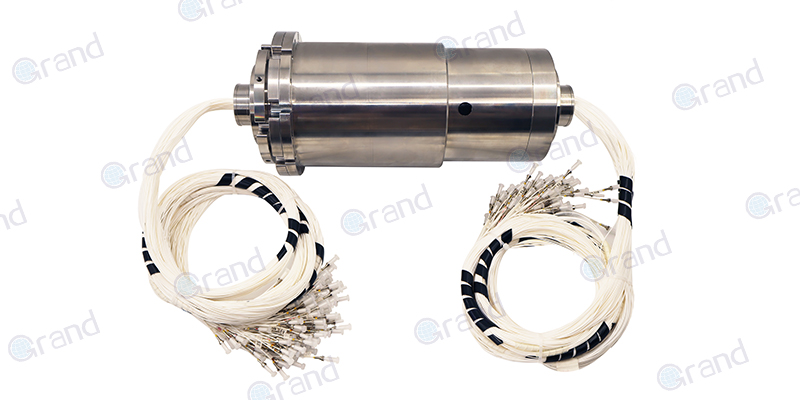
Actionable Advice
For those tasked with maintaining slip ring assemblies, keep a maintenance log to track inspections, cleaning, and replacements. Such records can reveal patterns and help refine your maintenance strategy. Always consult the manufacturer’s manual for specific guidance and consider training your maintenance team to recognize early signs of wear and potential issues.
Regular maintenance and effective troubleshooting of slip ring assemblies are essential in minimizing downtime and avoiding costly repairs. By adhering to maintenance schedules and staying vigilant for signs of trouble, users can ensure that their slip-ring assemblies continue to operate smoothly, contributing to the overall success and efficiency of their electromechanical systems.
Innovations and Future Trends in Electrical Slip Rings Assembly
As the technological landscape continues to evolve, the realm of electrical slip-ring assemblies is no exception. This chapter delves into the recent advancements and forward-looking trends that are set to redefine the capabilities and applications of slip rings. Whether it’s cutting-edge materials or digital integration, these innovations not only enhance existing systems but also pave the way for future development.
Technological Advances in Design and Materials
High-Performance Materials
Recent breakthroughs in material science have had substantial impacts on slip-ring technology. For instance, the advent of novel composite materials with exceptional conductivity and wear resistance has resulted in slip rings with vastly improved service life and reliability. An example is the use of graphene composites in contact, which offers reduced friction and enhanced durability compared to traditional metal alloys. As a result, high-demand applications like renewable energy wind turbines reap the benefits of longer maintenance intervals and reduced operational costs.
Modular and Compact Designs
Advancements in design have led to slip rings that are more modular and compact than ever before. These design improvements facilitate easier integration into tight spaces and modular components allow for rapid servicing or replacement. In the field of robotics, where space is at a premium and flexibility is crucial, compact slip rings with plug-and-play capabilities have dramatically simplified the assembly and maintenance processes.
Future Trends in the Slip Ring Industry
Integration with IoT and Smart Technology
The future of slip-ring assemblies is closely tied to the Internet of Things (IoT) and smart technologies. Slip rings are becoming increasingly intelligent with embedded sensors and communication capabilities that allow them to transmit real-time data regarding their operational status. For instance, in smart factories, slip rings equipped with IoT technology can alert maintenance teams about the need for service before a failure occurs, integrating seamlessly with predictive maintenance models.
Energy Transmission and Data Collection Convergence
Another ongoing trend is the convergence of energy transmission and data collection within a single slip-ring assembly. Future slip rings may include technologies such as inductive couplings and wireless transmitters aimed at both powering devices and collecting operational data without physical contact. The automotive industry is exploring the potential of such technologies for use in electric vehicle charging systems, where slip rings could manage the charge transfer and monitor battery health simultaneously.
Actionable Advice
Staying abreast of the latest developments in slip ring technology is crucial for both manufacturers and users. For businesses, investing in the newest innovations may offer a competitive edge and operational efficiencies. It is recommended to consult with slip-ring suppliers about the latest advancements and consider how they could be integrated into your systems for enhanced performance and capabilities.
As we look towards the horizon, the integration of smart technologies and the continued refinement of slip ring materials and designs signal a bright future for this critical component. These innovations promise not only to improve the performance and reliability of current applications but also to create entirely new possibilities within the vast landscape of electromechanical systems.
The Central Role of Electrical Slip Rings Assembly in Modern Technology
As we wrap up our exploration of electrical slip ring assemblies, it’s clear that these components occupy a cornerstone position in the infrastructure of modern technology. From enabling the seamless operation of renewable energy turbines to facilitating precision movements in robotic systems, slip rings play a pivotal role in powering and controlling a wide array of dynamic electrical connections. This concluding chapter highlights their indispensable function and invites readers to delve deeper into the specifics of how slip rings can be innovatively applied within their spheres of interest or industry requirements.
The Keystone of Dynamic Electrical Connections
Ubiquity in Applications
Slip ring assemblies have become ubiquitous in their application, underscoring their critical role across various sectors. In the medical field, for example, slip rings contribute to the life-saving imaging produced by MRI machines by enabling the continuous rotation of the gantry without tangling the wires. Similarly, in the realm of space exploration, slip rings ensure reliable data and power transmission between the stationary and rotating parts of satellites, providing a lifeline for communication and operational functionality in the harsh environs of space.
Enabling Innovation
Beyond their traditional roles, slip rings are at the heart of pioneering technologies. In renewable energy, they facilitate the transition to greener alternatives by ensuring wind turbines operate efficiently, thereby making a substantial contribution to global clean energy goals. Their ability to transmit power and data simultaneously and reliably underpins the feasibility and expansion of innovations like electric vehicle charging systems and advanced industrial automation.
Embarking on Your Slip Ring Journey
Tailored Solutions for Industry Needs
Given the broad spectrum of applications, the specifics of slip ring assemblies can be as diverse as the industries they serve. Each application may require different materials, designs, or integration capabilities, pointing to the importance of customized solutions. For instance, a manufacturer focusing on maritime equipment would prioritize corrosion-resistant materials and waterproofing, while a tech company involved in consumer electronics might seek miniaturized slip rings for sleek device designs.
Continuous Learning and Adaptation
Exploring the world of slip rings means staying abreast of the latest materials, technological innovations, and industry-specific solutions. Engaging with manufacturers, attending trade shows, or participating in forums dedicated to electromechanical design can provide valuable insights. Additionally, experimenting with different configurations and staying open to emerging trends will ensure that one remains at the forefront of slip ring technology applications.
A Call to Action
The landscape of electrical slip ring assemblies is dynamic and evolving, promising new possibilities and challenges. Whether you’re an engineer seeking to refine a current application, a designer pondering the integration of slip rings into a new product, or an industry specialist looking to leverage the latest advancements, delving deeper into this field can unlock significant benefits.
By understanding the specific considerations and potential of slip ring technology within your domain, you can innovate more effectively, enhancing both performance and reliability. Remember, the journey into slip-ring technology is not a one-time venture but a continuous exploration of possibilities.
Inspiration to Explore Further
We encourage readers to not only take what has been learned from this exploration but to also venture beyond. The role of electrical slip ring assemblies in modern technology cannot be overstated—they are the silent workhorses behind the scenes, making dynamic electrical connectivity possible across an immensely diverse array of applications. Armed with the knowledge of their potential and insights into upcoming trends, you are now better equipped to harness the benefits of slip ring technology. Explore, innovate, and integrate; the possibilities are limitless.
FAQs about Electrical Slip Rings Assembly
Q: What is an electrical slip rings assembly?
A: An electrical slip rings assembly, often simply referred to as a slip ring, is a mechanical device that facilitates the transmission of power and electrical signals from a stationary structure to a rotating one. It is composed of a rotating ring and stationary brushes (or contacts) that maintain an electrical connection between the rotating and stationary parts, allowing for continuous 360-degree rotation without tangling wires.
Q: How do slip rings work?
A: Slip rings work by making continuous electrical connections between a rotating surface (rotor) and a stationary source of power or data (stator). As the rotor spins, the electrical contacts (or brushes) rub against the outer circumference of the rotating ring, ensuring consistent transmission of power and signals regardless of the rotation angle.
Q: What are the typical applications of slip rings?
A: Slip rings are used in any application that requires the transmission of power and/or data to a rotating platform. Common applications include wind turbines, medical machinery (such as CT scanners and MRI machines), industrial machinery, robotics, surveillance systems, radar antennas, and even amusement rides. They are also critical components in aerospace and defense for use in satellites, helicopters, and other rotating equipment.
Q: Can slip rings transmit data as well as power?
A: Yes, modern slip rings are designed to transmit both power and data simultaneously. This capability is crucial in applications that require not only power transmission but also real-time data exchange, such as in robotics and industrial automation systems.
Q: How long do slip rings last?
A: The lifespan of a slip ring assembly depends on several factors including its design, materials, application environment, and frequency of use. High-quality slip rings designed for specific applications and maintained correctly can last for millions of rotations. However, the physical wear of contacts is inevitable over time, so maintenance and eventual replacement are part of their lifecycle.
Q: Are there maintenance-free slip rings?
A: While all slip rings require some level of maintenance to ensure optimal performance, developments in materials and technology have led to slip rings that need minimal maintenance. For example, the use of precious metals and advanced composites in contacts and brushes can significantly reduce wear and extend service intervals. There are also contactless slip rings, which use magnetic induction or radiofrequency to transfer power and data, thereby eliminating mechanical wear.
Q: Can slip rings be customized?
A: Yes, slip rings can be highly customized to meet specific requirements of an application. This includes customization in terms of size, number of channels (for power and data), type of signal (electrical, fiber optic, RF), current capacity, and environmental protection (against moisture, dust, and temperature extremes). Manufacturers often work closely with customers to design slip rings that fit precisely into their systems.
Q: How are slip rings tested for quality?
A: Slip ring manufacturers use a variety of tests to ensure quality and reliability. These tests may include electrical continuity testing, insulation resistance testing, dielectric strength testing, and life cycle testing. Manufacturers might also conduct environmental tests such as temperature, humidity, and vibration testing to ensure the slip ring can withstand the conditions of its intended application.
See What We Can Do
